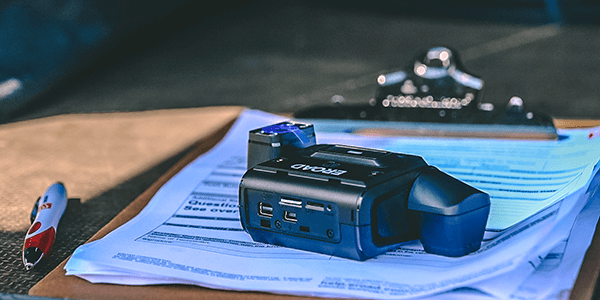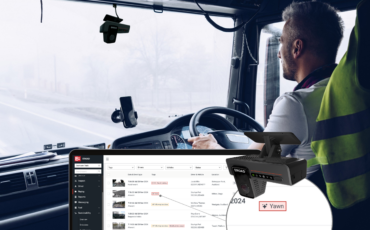Dashcams and Driver Performance Management
Dashcams and Driver Performance Management
While dashcams are designed to benefit everyone, putting them into play can be a bumpy road. Melissa Weller, Safety, Health and Wellbeing director at the Australian Trucking Association, discusses how to approach difficult conversations with drivers who have demonstrated unsafe behaviour.
Implementing dual-facing dashcams in your fleet is bound to cause anxiety about a range of concerns, from personal privacy to data security. But if you can communicate clearly with your drivers from the start, you’ll find their anxiety quickly lessens. The better their understanding about why these systems are being put in place and how they will be used, the greater the acceptance at the driver level.
Building driver understanding
Start by making sure everyone in your organisation knows why cameras are being installed: It’s not about a lack of trust but to benefit the safety of everyone involved, from the business to its drivers to other road users. Emphasise that dashcam technology is there to protect drivers first and foremost – after all, they’re the ones on the frontlines every day – while enabling the company to meet its Chain of Responsibility obligations. Who doesn’t want to do the right thing?
Then comes the how: Educate your team on the comprehensive nature of these systems. We’re not talking about just a camera here – dashcams feed into rich telematics systems that provide useful, often crucial operational data, and video is just one part of that. Make sure drivers understand exactly what will be recorded, who has access to that footage, and all its possible uses, be that training or safety reviews.
Once you have your why and how, make sure your drivers understand what is expected of them. Clearly state all professional driver requirements at induction and build them into refresher training and ongoing communications, such as toolbox talks and daily stand-up meetings. Frequent, friendly reminders of what is expected will normalise talking about driver performance while minimising any feelings of unnecessary intrusion.

6 tips for managing difficult conversations
Of course, despite everyone’s best efforts and intentions, what happens on the road is sometimes beyond anyone’s control. Things can and do go wrong. But how you handle difficult situations when they arise will make all the difference in employee compliance, team morale, and successful dashcam adoption.

1. Prepare for the conversation
As a manager, make sure you know all the facts of what happened as much as possible. Have your questions, facts, and footage ready, and give notice of the meeting to allow the driver to mentally prepare. Ensure the meeting is of an appropriate length for what needs to be covered, and let the driver know they may bring a support person if they wish.

2. Try not to make them difficult conversations
Spin them as positive learnings, give the driver the benefit of the doubt, and take a collaborative approach to behavioural improvement. Stay firmly on topic, which is addressing the identified unsafe behaviour.
Assume that no one wants to do a bad job and ask how you can help make it better.

3. Don’t be aggressive
Don’t be accusatory, dominate the conversation, or talk “at” the driver but do make sure they understand what the meeting is about, the seriousness of the event, and what the desired outcome is. Ask how they’re feeling, what they think happened, what they think caused the issue, and understand they may initially be defensive.

4. Be supportive and open to listening
Consider the employee’s perspective. Give them the opportunity to share their side of the story. There may be an underlying cause behind the behaviour you’re unaware of, particularly if it’s uncharacteristic of that driver. If they’re tired or distracted, is there a personal issue at home or at work? Or perhaps a need for more training or further induction on behavioural expectations?

5. Develop a reasonable action plan
Seek solutions aligned with company policy to help the driver reach the standards you require, such as additional driver training; modifying the driver’s schedule, route, or vehicle where possible; more frequent reviews; or professional or peer support services. Set clear expectations and goals for improvement, have the driver acknowledge and accept the responsibility of meeting those expectations, and give them a fair chance to comply. Ensure a clear understanding on both sides of next steps, including required remedial actions and follow-up meetings.

6. Be firm but fair on poor performance
Stay updated of their progress, offer positive feedback on any improvements, and ask what they need to prevent the issue from happening again. High levels of distraction can be an indicator of anxiety or stress that even the driver may not be aware of. That’s why it’s important to thoroughly investigate what’s happening on that route, in the distribution centre, or outside work that could be causing distress. If someone can’t or won’t comply, you’ll have taken all the right steps as an organisation to manage unsafe behaviour and bring the driver up to standard.
While knowledge around the human side of trucking operations is growing, wellbeing management and interpersonal skills training have historically been under-prioritised. There’s a huge industry need to increase training and awareness on operational level, from those doing the scheduling to those managing teams of drivers. This includes identifying the signs of mental ill health and advising drivers on how to look after themselves, from staying hydrated to making better food choices, which will help them be more alert and capable, physically and mentally.












